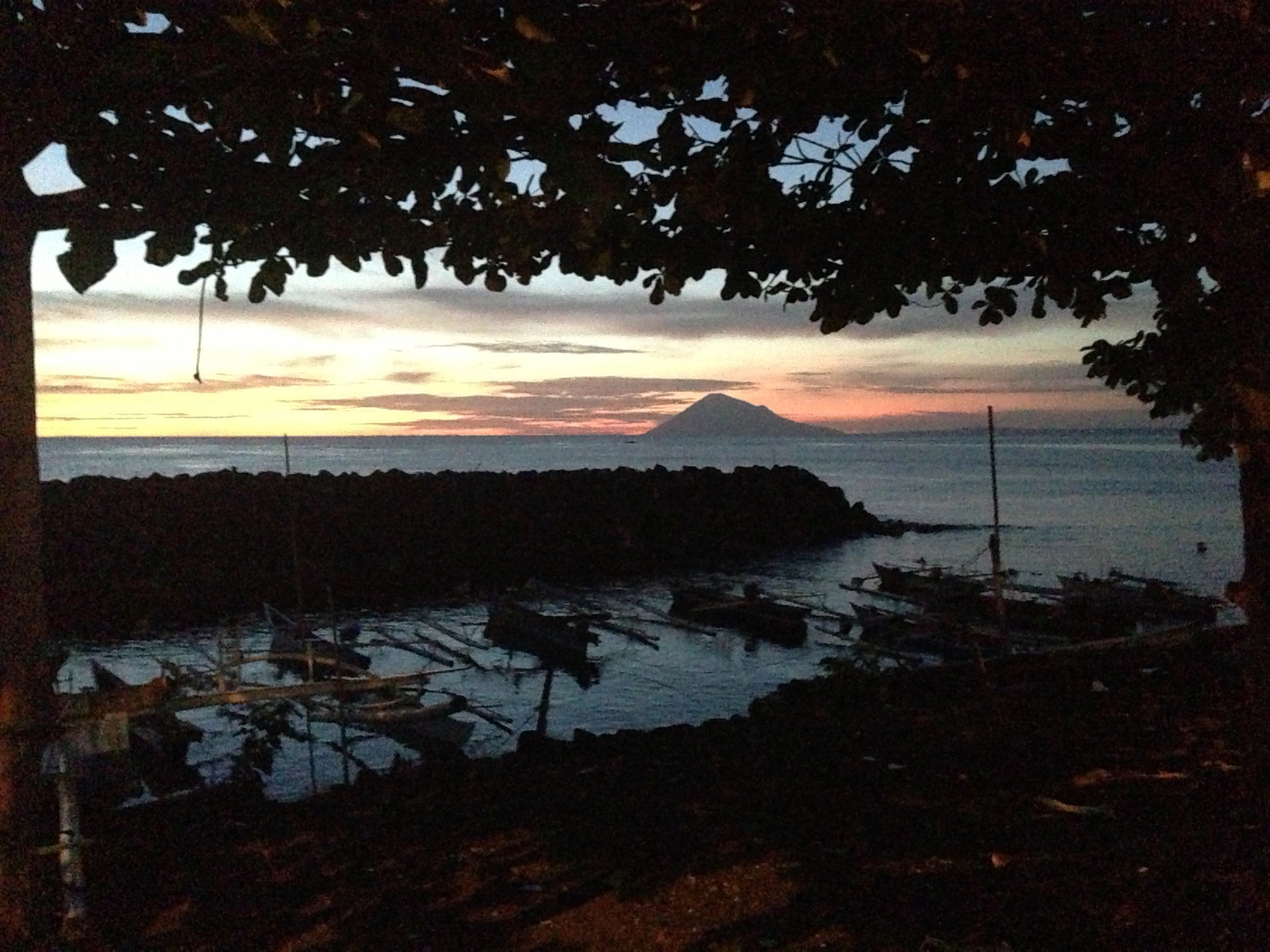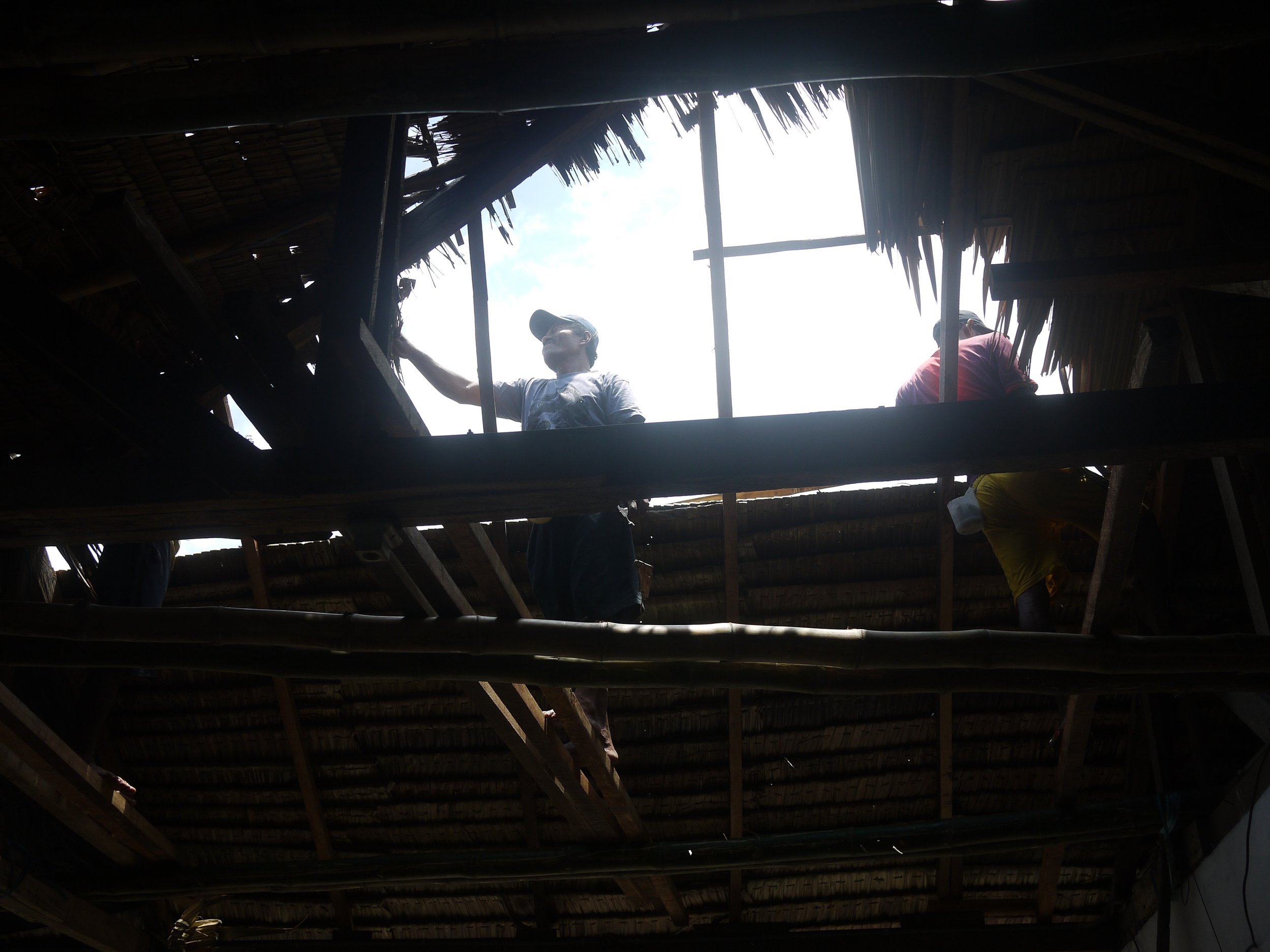Chapter 4 | Re/claiming Space
A certain few didn’t express frustration so much as anger, which they directed at the issue of reklamasi, the urbanization of nature, and the irreversible replacement of beaches with concrete—as well as the modernist dreams of a Manado that converted small fishermen’s shacks into large shopping malls, creating new jobs for some while erasing the livelihood of others. The joys of a free-flowing current in Manado’s bay were now almost distant memories, replaced by the growing fear of flooding.
Chapter 4, Re/claiming Space, describes Manado city through a dynamic of change and the city’s changing drinking landscapes. It demonstrates how modernization of the city disrupted the safety of its drinking circles (as well as the larger circle of local community and values), particularly as drinking circles were gendered spaces, with some of those that girls perceived as safe deemed unsafe and disorderly by the police. As in the previous chapter, centering young people’s drinking circles highlights a meeting point between youth resistance, youth aspirations, and the broader social drive toward a particular vision of modernity.
In this final chapter, I present Manado through a dynamic of change, tracing the city’s changing topographies as they appeared at the time of my fieldwork. Driven by new aspirations and modes of socializing and living in the city, new spaces emerged, and old spaces disappeared. This included the city’s drinking landscape; locations that had long hosted drinking circles were replaced with commercial drinking establishments catering to a new and different clientele while erecting barriers—especially economic ones—to exclude others. I detail these changes and demonstrate the loss of safe and easily accessible drinking spaces to dominant understandings of modernity, safety, and public order, which reflected broader changes in understandings of how space should be inhabited.
Among those especially angered by the changing topographies and coastal reclamation projects in the city were my friends at the Association for Traditional Fishermen in North Sulawesi (Asosiasi Nelayan Tradisional Sulawesi Utara).
ANTRA was formed in 2010 to collectively fight for the rights of local fishermen and protest the city’s coastal reclamation projects. The group protested reklamasi on the grounds of not just its clearly negative impacts on the marine ecosystem, but also the displacement, marginalization, and shrinking access to the sea that individual members had experienced. Reclamation projects meant the eviction of households living along the shoreline, most of them part of traditional fishing communities (Patunru, McCulloch, and von Luebke 2009) that depended on the open coastline as a place to moor their boats and venture out into the sea. But these fishermen were now competing with a whole city headed seaward.
Access to land and livelihood was thus rapidly shrinking, and ANTRA, which found itself in direct conflict with developers of the latest shopping mall, Mantos 3, had a lot of work to do. The organization’s administrative office (sekretariat) was known as Daseng Sario, as it was located along the waterfront in Sario Tumpaan, close to the center of town. But often it was simply called Daseng. The fishing community had built Daseng in October 2010, in order to secure their right to the small open beach nestled between the BCP’s Mantos and Boulevard Malls (Doaly 2014; Susilo and De Meulder 2018).
Credit: Telleng 2016
Daseng wasn’t just a base for ANTRA and its members to have meetings and host discussions. It was also a place for family members, nearby residents, young environmental activists, journalists, members of the LGBT community, and punks (both local and traveling) to come together, socialize, and mobilize. It was, as Doreen Lee (2016, 160) describes her activist dwellings, “a place for community, somewhere between the public and the private, and a place for work and play.” For a handful of youth, Daseng was home.
These shared spaces of work and play were, as Susan Stewart (1993, 167) and Doreen Lee (2016, 147) put it, “spaces of intense socialization” that “concretize[d] the fraternal bonds and kin-like relations between senior and junior activists, comrades, boyfriends and girlfriends.”
It was part of the underground scene in which young people from various subcultures spent their time, and also a place where they could earn a little money helping to make fishing nets and other supplies under the instruction of the older fishermen. It was commonplace, therefore, to find young people—those in the fishing trade and otherwise—stitching fishing nets at Daseng while the elders gathered around the coffee table, relaxing after a morning out at sea. The fishermen’s wives could also be found hanging around Daseng, keeping at least one close eye on their children and another on their conversations. The younger children congregated on the shrinking beach below, entertaining themselves by narrating crab fights and collecting treasures from the growing heaps of trash on the beach.
Those who supported Daseng’s activities and protests were known as tamang-tamang Daseng (Daseng friends), and for Didi, their presence was a crucial part of this. Caring, being involved, and showing solidarity meant doing all of those things on important protest days and at discussion events, as well as taking part in Daseng’s drinking circles.
It became almost a biannual event for a sudden rupture to reignite the conflict, and as more and more rocks continued to choke the open beach space, suspicion grew that a deal had been made between the developers and the city government. A large Stop Reklamasi banner was placed outside of Daseng, and the fishermen continued to place their boats on the narrowing beach space.
They were re/claiming their space, lives, livelihoods, and lifestyles from the developers, local authorities, and Manado’s modernist dreams.
Credit: Bintan Siregar

Tonight, though, it was the perfect place for Lea and her girlfriends to come together and drink. Moving in closer, I could see from the light of their bright cellphone screens that there were three of them: Lea, Alia, and Rita. They were all sitting on a bench along one side of the shack, their backs facing the narrow dirt road we’d just walked along. This was a strategic move, as passersby would be unable to see what they were up to.
These drinking circles provided important moments of disclosure for the girls, as well as a time and space where each could try to resolve their problems collectively.
Where do you drink if it isn’t here?” I asked. Lea answered, “On the street.” But she explained that it wasn’t good when people could see them with bottles of alcohol. “Those are naughty girls (cewek nakal) [they say]!” Alia chimed in, pointing at Lea and taking on the role of a passerby. As the oldest of the three, Alia had taken on the job of watchdog that evening. Each time she noticed somebody approaching the shack, she would alert the others. They would quickly place the bottles back under their chairs and push them as far back and out of sight as possible.
The girls also worked together to co-create their safe drinking “circle” through a particular spatial organization, which did not involve sitting in a circle at all but sitting next to each other in a line, their backs turned to anyone passing by, thus protecting their anonymity.

When the US Marines and sailors from the USS Rushmore came to Manado for a short port visit in June 2015, Djarod Café seemed to be their favorite hang-out spot. It was located in the center of Manado, on the southern end of Megamas, one of the six lots that belonged to the BCP. What was once an open shoreline freely accessible to all was now an area motorists paid to enter. Whether they planned to park or were just passing through, motorists collected a ticket when they entered the area and paid upon exiting, while motorcyclists paid a flat rate of 2,000 rupiah. Perhaps this was a way for the city to cover some of the exorbitant cost of the coastal reclamation projects that had created the urban land the whole development was built upon.
Djarod café sat near Megamas’s southernmost entrance. At the time of my fieldwork, it was one of the few cafes that served Cap Tikus cocktails, which were increasingly an “local authentic” attraction for the urban middle class and “exotic drinks” for visiting US Marines.
Mickey Mouse was Djarod’s signature cocktail, yellow in color and served in a large glass pitcher with lots of ice and several slices of lemon. On the menu, it was listed as a “Special Cocktail” and priced at 100,000 rupiah, while the “Extra Special Cocktail” was 120,000. This was nearly the same price as five bottles of unmixed Cap Tikus bought directly from a small warung (eatery) or kios (kiosk).
Another very important difference—and an added luxury—was that, instead of the single shared glass that commonly made its way around drinking circles elsewhere, each person had a drinking glass of their own. Still, people only partially filled their glass and drank their cocktail as a sloki rather than sipping it.
While stories about the police confiscating the Cap Tikus sold at a warung or kios were frequent, no stories circulated about a police sweeping at cafes like Djarod, which I suspect benefitted both from their association with being modern and up-to-date and from private deals with the police.
Policing practices impacted people differently according to class background; those who could afford it went to places like Djarod Café or hosted drinking circles at home, where they had the space and were sheltered from most police intervention. Those who normally socialized in the street, on the other hand, and who could not afford to frequent more “private” drinking venues, were targeted. This enforced a middle-class modernity based on more individualized consumption, as well as a stricter separation of the home and the street.

This was exactly the scenario that most of the girls I had spoken to were trying to avoid: being associated with sex work or labeled “easy” (gampang dapat) merely because they had been seen drinking alcohol in public.
These new drinking venues and provisioning pathways were accessible to people with disposable incomes and aligned to a specific understanding of modernity, safety, and public order—that held by those in positions of power, who could shape the city according to their own dreams and desires.
While undoubtedly there were people who felt safer in these new spaces and who might not have been able to go out otherwise, this was not the case for the girls in Tuminting, who felt safer in their own drinking circle. Nor were these the spaces that the punks and fishermen at Daseng had desired or imagined. Rather, these were spaces where several processes that Daseng members opposed came together: Cap Tikus’s rebranding to appeal to middle-class consumers, sourced by bypassing common provisioning pathways; the emergence of public/private spaces like Djarod and the policing of public spaces, such as the streets; and construction of the BCP development, built on reclaimed land, the result of urbanization that had destroyed the place where the fishermen had dreamt that their young children would learn how to swim: Manado’s bay, which was now filled with rubbish.
Credit: Bintan Siregar
The text on this page is extracted from the PhD thesis: “Inside the Drinking Circle: Cap Tikus, Contested Modernities, and Youth Resistance in Manado, North Sulawesi.” This thesis was submitted by Nastasja Ilonka Roels as part of the Doctoral Regulations of the University of Amsterdam (UvA). All text references should be made to the original thesis manuscript, once published via the UvA Digital Academic Repository, and not to this website. Permission is required to copy, display or reuse images, songs, and videos.















